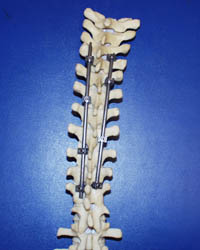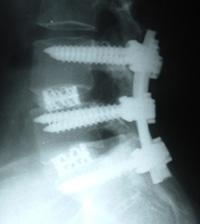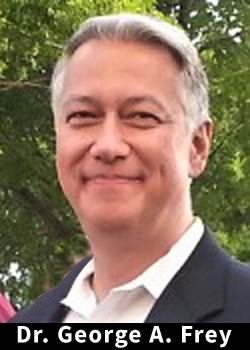Locations

Fax: (303) 762-9292

Spinal Fusion Surgery: ALIF, PLIF, and TLIF

Fusion surgery is commonly performed to treat disorders such as degenerative disc disease, scoliosis, spondylolisthesis, and fracture. Lumbar Interbody Fusion (LIF) combines spinal fusion with an interbody device, such as a threaded cage. Other types of spinal instrumentation may be used too. Spinal fusion fuses or joins two or more vertebrae together and uses bone graft to facilitate fusion. Bone graft may be from the patient (autograft), a donor (allograft), or bone morphogenetic protein (BMP). Bone graft is placed (or packed) around the interbody device (instrumentation) and between the vertebrae to stimulate fusion.
Common procedures our surgeons perform include ALIF, PLIF, and TLIF.
Anterior Lumbar Interbody Fusion (ALIF)
An ALIF may be performed to remove a lumbar disc (discectomy) and fuse the spine. ALIF can be performed as an open or minimally invasive procedure. The spine is accessed from the front (anterior) usually through an incision in the left abdominal area. A mini-open ALIF may be preferred as incisions are smaller and muscles preserved. Whether the surgery is open or minimally invasive depends on many factors including the patient’s medical history, spinal disorder, and surgeon’s preference.

ALIF - Anterior Posterior (AP) (Front to back View)

ALIF - Lateral (Side View)
Posterior Lumbar Interbody Fusion (PLIF)
A PLIF may be performed to treat degenerative lumbar problems such as scoliosis or spondylolisthesis. PLIF can be performed as an open or minimally invasive procedure.
The procedure involves a laminectomy (removal of the laminae) and trimming or removal of the involved facet joints to access the nerve roots, disc, and spinal canal. The extent of the removal of facet joints may depend on the implant size and/or spinal level treated. A discectomy is performed. The spinal canal and/or nerve roots are decompressed and the implant (interbody device) is fixed in place and bone graft is added.
Transforaminal Lumbar Interbody Fusion (TLIF)
A TLIF is similar to a PLIF except it fuses the front and back of the spine. For example, the anterior (front) may be stabilized using an interbody device and bone graft. The posterior (rear) is fixed using, rods, pedicle screws, and bone graft.

Two Level TLIF - AP View

Two Level TLIF - Lateral View

One Level TLIF - Anterior Posterior (AP View)

One Level TLIF - Lateral (Side View)
After Fusion Surgery
Whether an ALIF, PLIF or TLIF is performed, recovery is different for every patient. However, most patients are up and walking by the end of the first day after surgery. Most patients can expect to stay in the hospital for 3-5 days depending on their condition. When released, patients are given a prescription for pain medication to be taken as needed with home care instructions that include a detailed postoperative physical therapy/exercise plan to help ease recovery and return to a healthy life.








